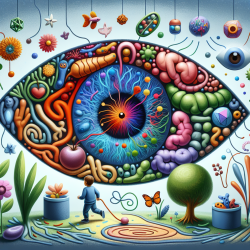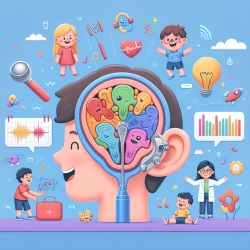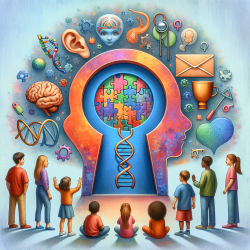Introduction
In the ever-evolving field of speech-language pathology, the integration of new research findings is essential for enhancing therapeutic outcomes. One such area gaining attention is the gut-brain axis, a complex communication network between the gut microbiota and the brain. Recent research, particularly the study "Gut microbial metabolites in depression: understanding the biochemical mechanisms," sheds light on how gut microbial metabolites can influence mental health, including depression. As practitioners, understanding these mechanisms can inform our approaches to therapy, particularly in children, where early interventions can have profound impacts.
The Gut-Brain Axis: A Brief Overview
The gut-brain axis is a bidirectional communication pathway linking the gastrointestinal tract and the central nervous system. This connection is facilitated by the gut microbiota, a diverse community of microorganisms residing in the intestines. These microbes produce metabolites that can influence brain function and behavior. The research highlights several key metabolites, including neurotransmitters, short-chain fatty acids, and indoles, which play roles in emotional and cognitive processes.
Implications for Child Development
Understanding the gut-brain axis is particularly relevant in the context of child development. The gut microbiota is involved in critical developmental windows that coincide with central nervous system development. Disruptions in the gut microbiome during these periods can lead to deficits in neurogenesis and synaptogenesis, potentially impacting cognitive and emotional development.
- Neurotransmitters: Microbial production of neurotransmitters such as serotonin and dopamine can influence mood and behavior. Ensuring a healthy gut microbiome may support emotional regulation and cognitive function in children.
- Short-Chain Fatty Acids (SCFAs): SCFAs, produced by the fermentation of dietary fibers, have anti-inflammatory properties and can modulate brain function. They may play a role in maintaining mental health and supporting cognitive development.
- Indoles: Derived from tryptophan metabolism, indoles can impact emotional behavior and are linked to mood regulation. Understanding their role can help in developing dietary interventions to support mental health.
Practical Applications for Practitioners
For practitioners in speech-language pathology, integrating knowledge of the gut-brain axis into therapy can enhance outcomes. Here are some practical steps:
- Collaborate with Nutritionists: Work with nutritionists to develop dietary plans that support a healthy gut microbiome, potentially improving cognitive and emotional outcomes in children.
- Monitor Behavioral Changes: Be aware of changes in behavior that may be linked to gut health and consider these factors when developing treatment plans.
- Encourage Further Research: Stay informed about ongoing research in the gut-brain axis to continually refine therapeutic approaches and incorporate new findings.
Conclusion
The gut-brain axis represents a promising frontier in understanding and improving mental health outcomes. By integrating insights from the latest research, practitioners can develop more holistic approaches to therapy, particularly in children, where early interventions can lead to significant long-term benefits. Embracing this knowledge not only enhances our practice but also empowers us to contribute to the broader understanding of mental health and development.
To read the original research paper, please follow this link: Gut microbial metabolites in depression: understanding the biochemical mechanisms.










